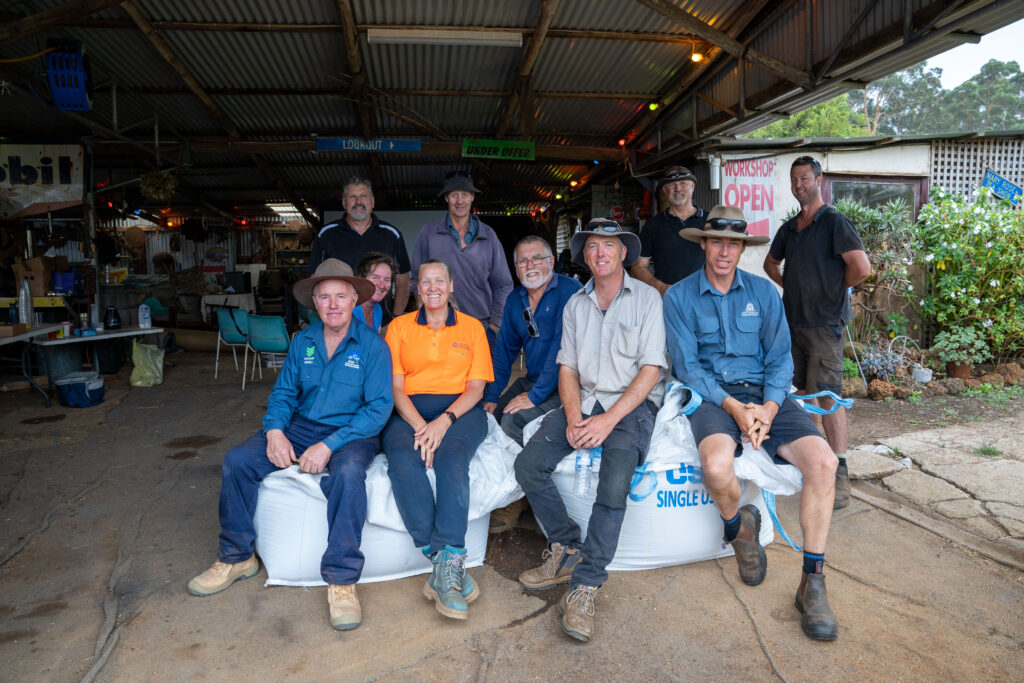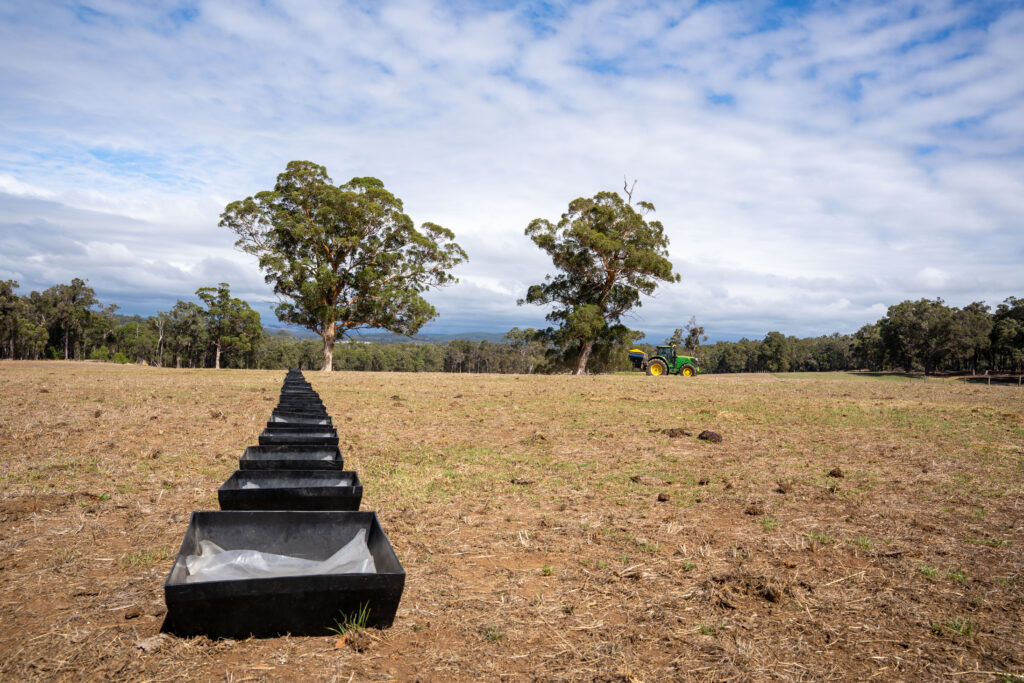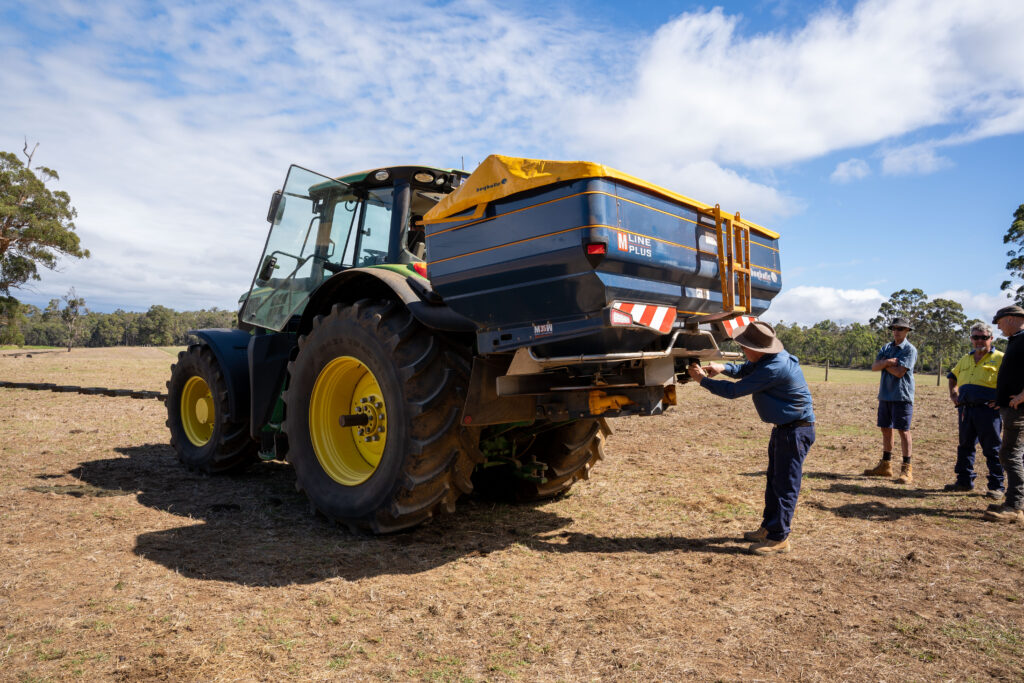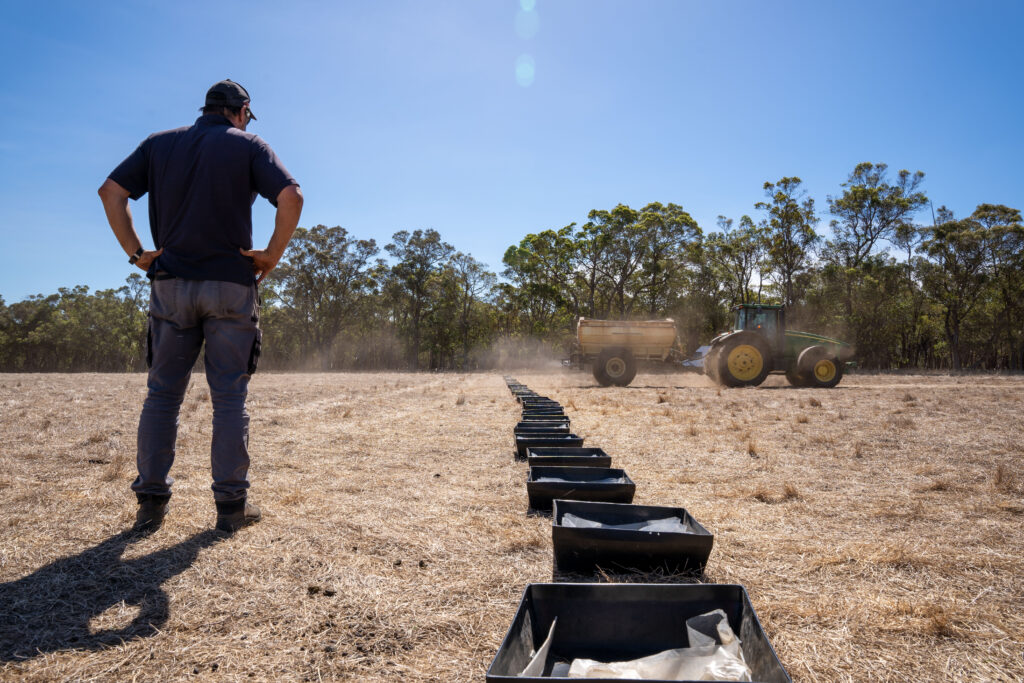Farmers keen to get the most out of their fertiliser investment joined us at a series of seven Accu-Spread® demonstration days across south-west WA in March as part of the State Government’s Healthy Estuaries WA program.
A total of 120 participants took part, some bringing along their own fertiliser spreaders for testing and calibration by Australia’s leading specialist, Russell Nichol. Russell has been testing the performance of spreaders for more than 30 years.
The testing helps farmers select an optimum spread width for different fertiliser products and lime, based on the performance of their spreader. Understanding the spread pattern of a fertiliser spreader when using different products can result in higher productivity and healthier waterways.

Farmers joined fertiliser spread expert Russell Nichol at the Accu-Spread demonstration days.
“Many fertiliser spreaders deliver highly variable spread patterns, meaning that some areas of a paddock may receive too little fertiliser and others too much,” said Dr Deborah Holtham, the Sustainable Agriculture Project Coordinator for the Department of Water and Environmental Regulation.
“With the high costs of fertiliser, it is especially timely for farmers and contractors to learn how to test and calibrate their fertiliser spreaders to make sure they are applying the right amount of fertiliser in the right places,” Dr Holtham said.
“From the perspective of waterways, and in a drying climate, it is more important than ever to keep excess nutrients from entering our waterways where they can fuel harmful algal growth.”
Accu-Spread involves the testing of fertiliser spreading equipment for accuracy and evenness of spread to optimise performance. Calibration through manual adjustments of the spreader mechanisms can then be done, after which the spreader is retested. The process also identifies whether further adjustments, repairs or maintenance are needed.
As part of the test, a spreader is driven between fertiliser collection trays set up at one-metre intervals. The fertiliser collected is then weighed, and the weight data is entered into the Accu-Spread computer program to produce a graph showing the width and evenness of the spread.

A series of trays set up to collect fertiliser as part of the testing.
“We conducted 75 tests on 21 spreaders during the seven field days and used three different products: urea, superphosphate and lime,” said Dr Holtham.
“Farmers were surprised to learn that only a quarter of the machinery tested had satisfactory spread patterns. This has some serious implications for fertiliser management and spreading costs.”

Russell Nichol inspects and adjusts the fertiliser spreader to address issues identified by the tests.
Bruce Radys from Oyster Harbour Catchment Group hosted two of the demonstration days.
“The days were a great opportunity for farmers and contractors because you don’t really know how a spreader/tractor combination performs until it does a run over the trays. Even two spreaders of the same model can have different spread patterns,” said Bruce.
“Although some farmers were disappointed at how their spreader performed, the Accu-Spread graphs show them at what distance they can accurately spread for different fertiliser products.”
“Some of the more modern spreaders can be easily adjusted by changing the drop point where the fertiliser hits the spinners. By running the machine over the trays on different settings, it allows the operator to determine the best drop point setting to use for their application.”
“Various upgrade kits available for locally manufactured machines can improve spread pattern, but testing after upgrades, modifications or adjustments is essential to determine if there really is an improvement and what the new ‘ideal’ bout width is.”
“It’s great for the farmers who make improvements to be able to spread at a wider bout width – reducing waste, spreading time and costs or being able to match seeder widths [tramlining]. It’s a great outcome because a properly calibrated spreader running at its ideal bout width is not only more efficient, but the fertiliser is more likely to be absorbed by pasture and less likely to end up in our waterways,” said Bruce.

Bruce Radys, Senior Project Officer from Oyster Harbour Catchment Group, observes a spreader going over the Accu-Spread trays.
Dr Holtham said the demonstration days enabled farmers to build up their knowledge and skills about optimising the performance of their spreaders.
“We also had retailers who sell fertiliser spreaders, a spreader contractor and high school agriculture students come along to learn more about best management practices for fertiliser application,” said Dr Holtham.
The demonstration days were delivered by Healthy Estuaries WA catchment group partners, the Department of Water and Environmental Regulation and the Department of Primary Industries and Regional Development.
This project is part of the State Government’s Healthy Estuaries WA and Revitalising Geographe Waterways programs. These State Government initiatives aim to support the long-term health of our South West estuaries.
Learn more about best practices for nutrient management, including fertiliser spreading, here: https://www.wa.gov.au/government/publications/nutrient-best-management-practices-guideline
